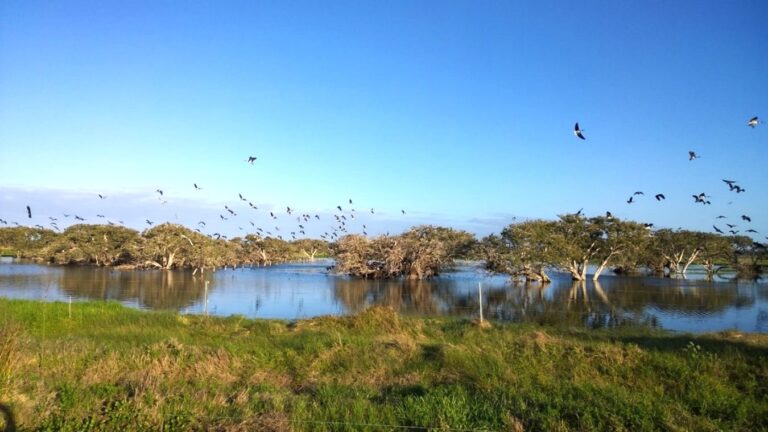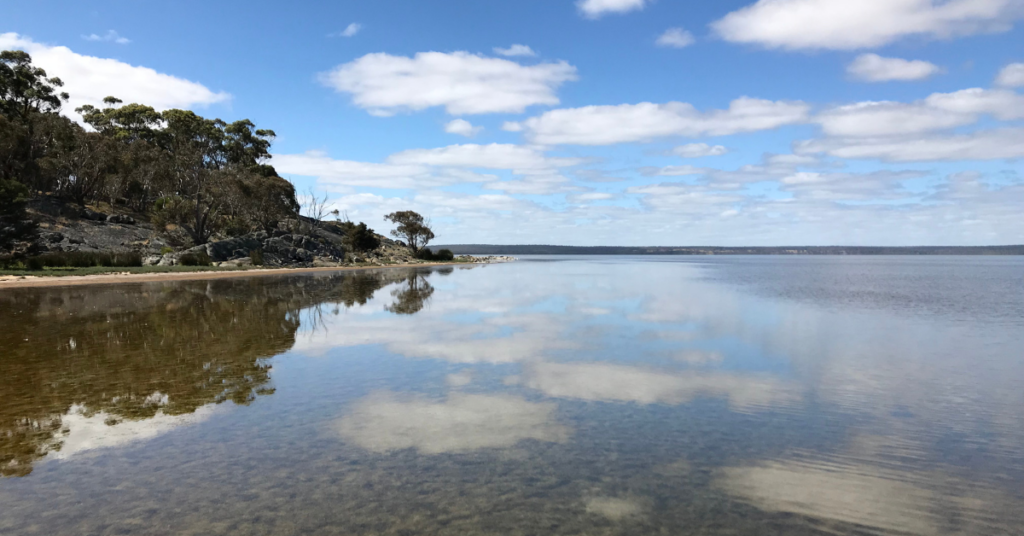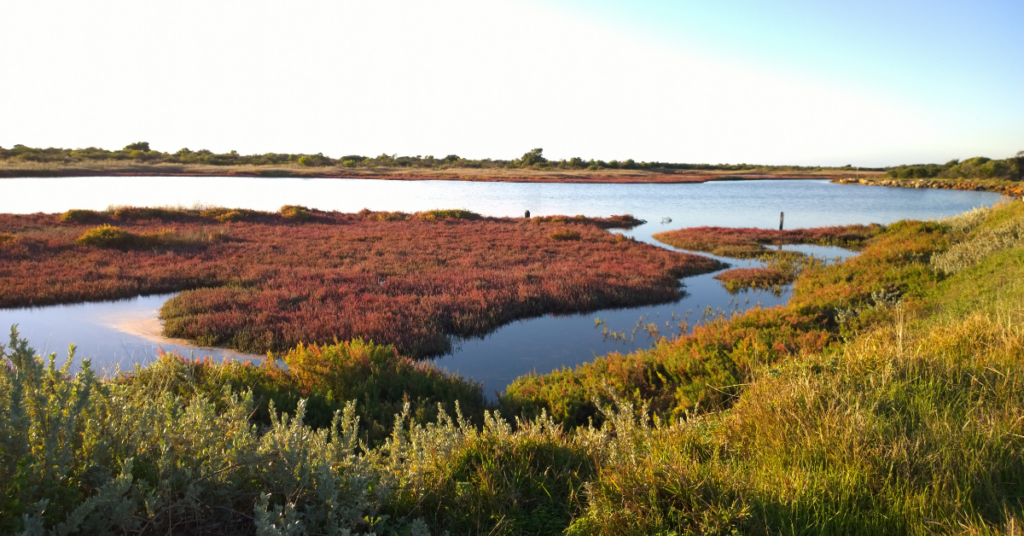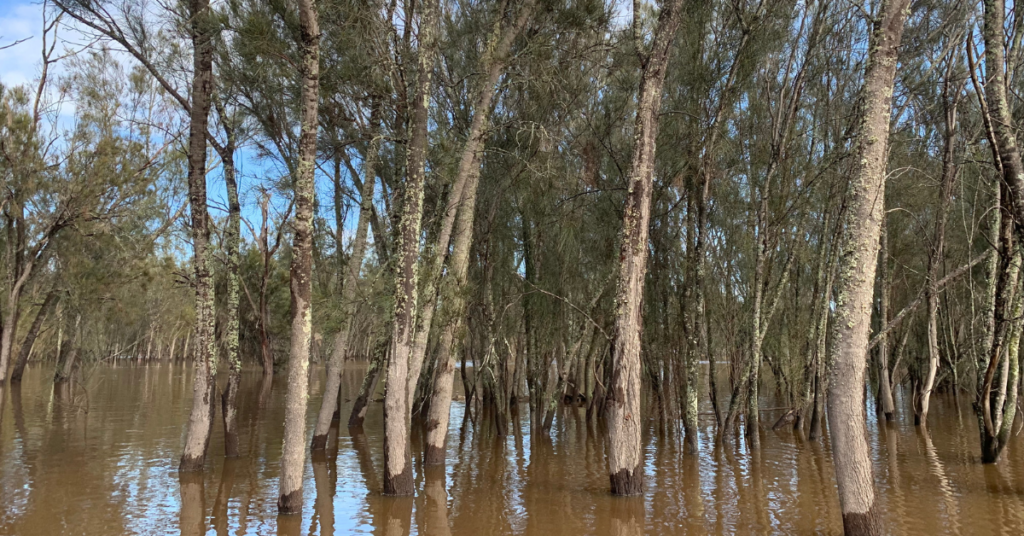
Article by Dr Manda Page
In Short:
- Earth is losing wetlands 3 times faster than forests.
- Saving them helps boost biodiversity, address climate change and benefits human health.
- An international treaty called the Ramsar Convention guides work to conserve and restore 2,400 Ramsar-listed wetlands around the world.
- There are 3 Ramsar Wetlands in our region and South West NRM is spearheading work to improve their health.
When it comes to discussion on the environment, trees get a lot of air time. But earth is losing wetlands three times faster than forests.

That matters because wetlands are vital ecosystems. They are heavy lifters when it comes to helping with the biggest environmental challenges of our time through their role in boosting biodiversity and addressing climate change.
They also provide fresh water and support the economic and cultural wellbeing of people everywhere.
But on a global scale, 30% of wetlands have been lost since the 1970s.
Global effort to conserve wetlands
To address the problem, 172 countries agreed in 1971 on a commitment to halt the worldwide loss of wetlands and undertake measures to better conserve those left.
That treaty was called The Convention on Wetlands of International Importance. It was signed in the coastal Iranian tourist city of Ramsar and so has become more widely known as The Ramsar Convention.
It was remarkable because up until that day, treaties were generally between nations to address terms of war, ceasefires or supply of aid. This was the first time a modern treaty had been signed between nations with the aim of conserving natural resources.
What’s a Ramsar Wetland?
Under The Ramsar Convention, wetlands around the world which are identified as being rare, unique or important for conserving biological diversity become designated Ramsar Wetlands.
There are more than 2,400 Ramsar Wetlands globally and Australia has 67.
There are three of these special wetlands in our South West NRM Region and, with support from our partners, we have undertaken an extensive body of work over many years to both conserve and improve the health of these wetlands. We are also working on a current new project with progress now happening.

3 Ramsar Wetlands in our South West
Lake Toolibin
Designated Ramsar Site since 1990
Sits within one of 20 Priority Places identified for attention by the Australian Government’s Threatened Species Action Plan.
Lake Toolibin is located within the WA Wheatbelt Woodlands and is one of the last inland freshwater lakes found in our South West. It includes a Threatened Ecological Community (in danger of being lost) and when full, supports more breeding waterbird species than all other inland wetlands in our region.
Vasse-Wonnerup
Designated Ramsar Site since 1990
Vasse-Wonnerup System is an important feeding habitat where thousands of migratory shorebirds (many listed as threatened species) spend the summer months feeding before their long migration to the northern hemisphere for breeding.
Muir-Byenup
Designated Ramsar Site since 2001
Muir-Byenup is a rare peat wetland system covering 10,631ha (7000ha is wetland) with threatened species unique to the region including:
- Australasian bittern (Botaurus poiciloptilus)
- quokka (Setonix brachyurus)
- numbat (Myrmecobius fasciatus)
- chuditch or western quoll (Dasyurus geoffroii)
- woylie or brush-tailed bettong (Bettongia penicillata)
- Three wetland-dependent orchids (Caladenia christineae, Caladenia harringtoniae and Diuris
- drummondii)
- Balston’s Pygmy Perch (Nannatherina balstoni)
- Muir’s corella (Cacatua pastinator pastinator)
- forest red-tailed black cockatoo (Calyptorhynchus banksii naso).
Current wetland work
Right now my team is working with local communities, regional partners and land managers to manage and mitigate environmental threats and improve the overall health and function of our South West’s three Ramsar Wetlands through research, monitoring and infrastructure improvements.
Our current five-year project (Funded by the Australian Government’s Natural Heritage Trust and delivered by South West NRM, a member of the Commonwealth Regional Delivery Partners panel) is the second body of Ramsar Wetland work and aims to further improve condition and reduce threats to ecological character across all three wetland sites. You can read about our previous Ramsar work here.

Ian Wheeler from DBCA Warren Region undertaking bird monitoring. Photo: Jane Putland.
At Muir-Byenup, in partnership with members of the DBCA Warren Region Team based in Manjimup, we’ve commenced monthly waterbird surveys for the wetter months between April and September. This will add to an existing dataset and along with a hydrological study on groundwater will inform future management actions.
Further stages of work planned for Muir-Byenup include Cape Tulip weed and feral animal control to protect and enhance the wetland’s natural vegetation and native fauna species.
Cutting-edge science
For Vasse-Wonnerup we’ve partnered with Edith Cowan University on an investigation into available food sources at the wetland and the species they support with a view to understanding the changing use of the wetlands by waterbirds.
Other than observing them, how do we know what food is available for water birds or what each bird species like eating in the wetland?
By applying the use of cutting-edge eDNA technology! Just like the way forensic investigators use DNA analysis to solve crime.
Again, this research will offer guidance on future management actions for the wetlands.
Stay updated!
To stay updated on our progress toward restoring Ramsar Wetlands in our region, sign up to receive our monthly e-newsletter.
Please feel free to share this article within your circles to help raise community awareness about our Ramsar Wetlands.
For more information on environmental conservation work by South West NRM over 20 years, please visit the Environmental Conservation page of our website.



Lake Muir
Vasse-Wonnerup
Lake Toolibin
